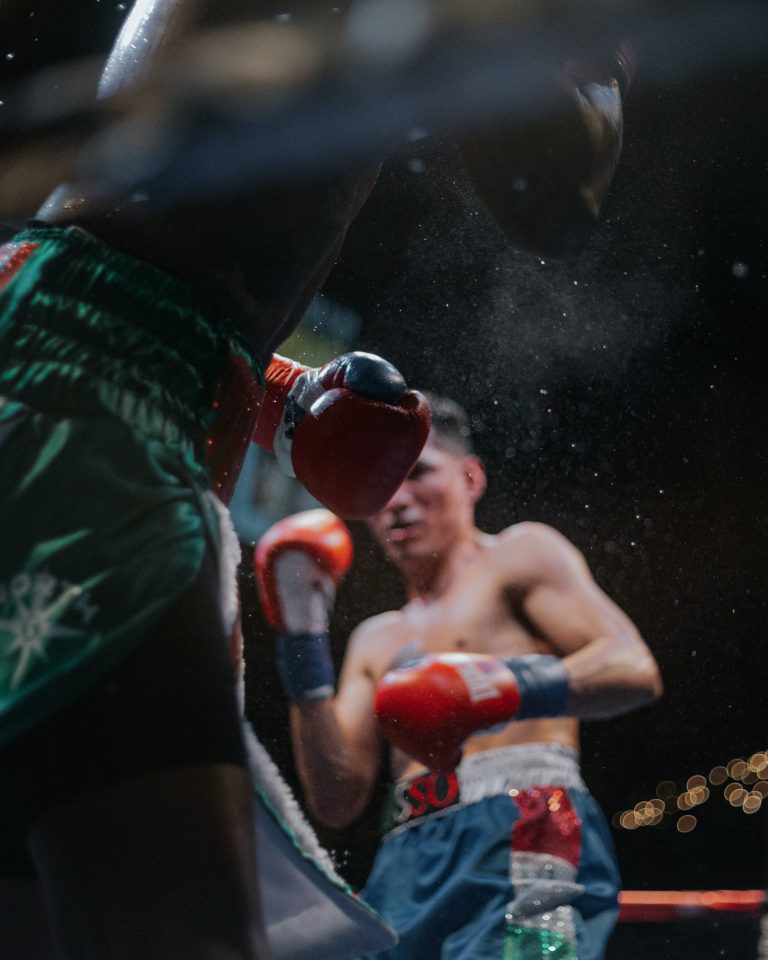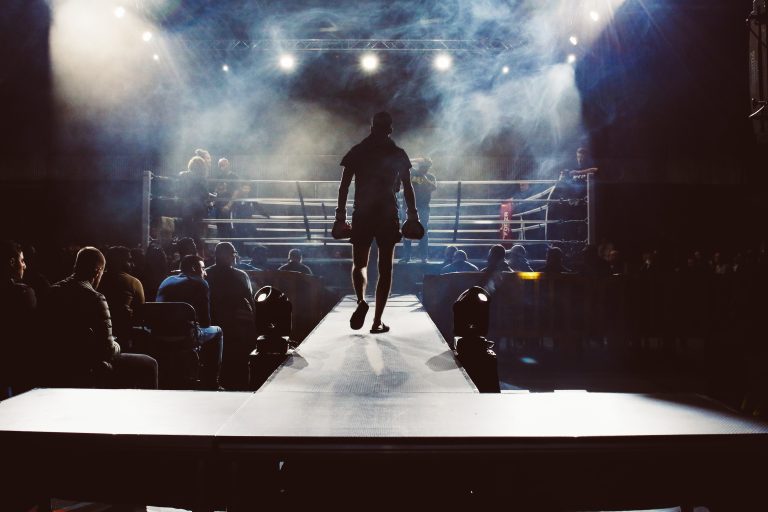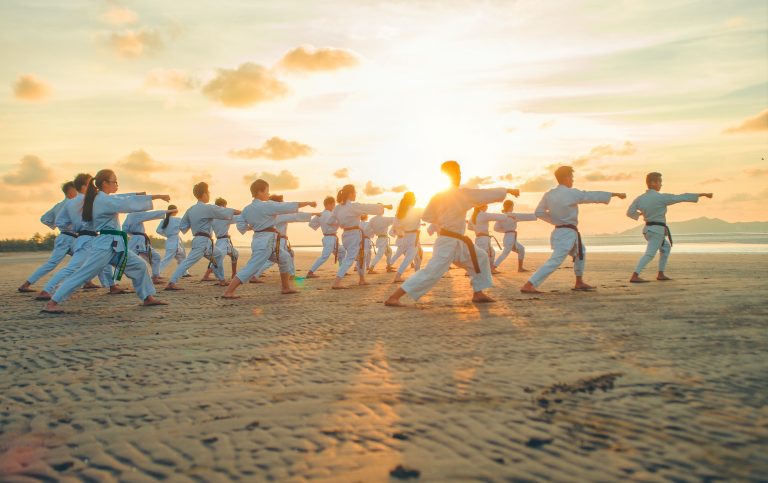Why Karate is Not Used in MMA
When it comes to martial arts, Mixed Martial Arts (MMA) is becoming increasingly popular around the world. MMA is a full-contact combat sport that uses a variety of striking and grappling techniques from different martial arts disciplines. Although karate is a traditional martial art that has been around for centuries, it is not commonly seen in MMA events. This raises the question, „why is karate not used in MMA?“ In this blog post, I will explore the reasons behind this phenomenon.
What is Karate?
Karate is a Japanese martial art that originated on the island of Okinawa. It was developed from indigenous fighting methods, such as te and Chinese martial arts that were introduced to the island. Karate is primarily a striking art that uses punches, kicks, knee strikes, elbow strikes, and open-hand techniques. It also includes grappling, joint-locking, throws, and takedowns. Karate is a popular martial art that is practiced by millions around the world.
The Evolution of MMA
MMA has its roots in Brazil, where it was developed in the 1920s by the Gracie family. Brazilian Jiu-Jitsu, a ground-fighting martial art, formed the foundation of MMA. In the early days of MMA, fighters from different martial arts backgrounds competed against each other to determine which style was most effective. Eventually, MMA evolved into a sport where fighters combined different martial arts styles to create their own unique fighting style.
The Rules of MMA
MMA has rules in place to ensure the safety of its participants. These rules vary depending on the organization that is hosting the event, but they generally prohibit certain techniques, such as eye-gouging, fish-hooking, and strikes to the groin. Fighters are also required to wear protective gear, such as gloves, mouthguards, and cups. The cage or ring in which the fight takes place is designed to minimize the risk of injury.
The Style of Karate
Karate is a striking art that focuses on powerful techniques from a distance, utilizing kicks, punches, and knee strikes. However, karate fighters are not well-versed in grappling or ground-fighting, which are essential components of MMA. Compared to other martial arts that are commonly used in MMA, karate does not offer much in terms of grappling techniques or ground-fighting.
The Importance of Grappling
One of the reasons why karate is not commonly used in MMA is because of the lack of grappling techniques. In MMA, fighters are expected to know how to grapple and defend themselves from grappling techniques. Brazilian Jiu-Jitsu, which forms the foundation of MMA, is a grappling art that focuses on submitting opponents through chokeholds, joint-locks, and other grappling techniques. Without a strong grappling background, fighters who rely solely on karate techniques would struggle in the grappling-heavy environment of MMA.
The Role of Kicks and Punches in MMA
Although karate style fighters are known for their powerful kicks and punches, those techniques alone are not enough in MMA. Fighters in MMA often combine a variety of techniques from different disciplines, such as Muay Thai, Boxing, Brazilian Jiu-Jitsu, and Wrestling. These techniques include punches, kicks, knees, elbows, takedowns, and submissions. While karate techniques can be useful in MMA, they are not enough to be competitive in the sport.
Why is Karate not used in MMA?
Introduction
Mixed Martial Arts (MMA) is a sport that combines different fighting styles such as Brazilian Jiu-Jitsu, Boxing, Wrestling, Kickboxing, and Muay Thai. However, one fighting style that is notably absent in MMA is Karate. Karate is a traditional martial art that has been around for centuries and has gained popularity worldwide. It is known for its powerful punches, kicks, and strikes. Many people often wonder why this fighting style is not used in MMA. This blog post aims to answer some of the most frequently asked questions about the topic.
1) Is Karate not effective in MMA?
One of the main reasons why Karate is not commonly used in MMA is that it is often considered to be less effective than other martial arts. This judgment, however, is not entirely true. Karate can be an effective fighting style in MMA, but it requires modification and adaptation to the MMA ruleset. This means some of the traditional techniques and strategies may not be suitable for the sport.
Karate is often criticized because of its limited use of grappling techniques. Grappling is a crucial aspect of MMA, and Karate practitioners have not typically focused on it. That said, fighters like Lyoto Machida, Georges St-Pierre, and Stephen Thompson have shown that Karate can be modified to include grappling techniques. These fighters have developed their own unique style of Karate by adapting their training to the challenges of MMA.
2) Why don’t MMA fighters use Karate kicks?
Karate is known for its powerful kicks, but they are not commonly used in MMA. This is because Karate kicks are often too flashy, leaving the fighters open to counter-attacks. Unlike traditional Karate, MMA fighters need to be able to defend themselves from takedowns and grappling attacks.
Additionally, Karate kicks tend to be more telegraphed than other kicking techniques used in MMA. The fighters are often given a sign to anticipate the kick, which can then be caught or countered. Kicks that are low to the ground and executed quickly are more effective in MMA since they are harder to anticipate.
3) Is Karate not allowed in MMA?
There are no rules that prohibit the use of Karate in MMA. Fighters can use any martial art style they want as long as it adheres to the ruleset. The main reason why Karate is not commonly used in MMA is that it is less effective than other martial arts.
4) Can Karate be used in MMA?
Yes, Karate can be used in MMA. However, it needs to be modified to include more grappling and to take into consideration the sport’s ruleset. MMA fighters can adapt some of the Karate strikes, such as the front kick, and integrate it into their fighting style. Karate practitioners must learn the importance of the ground game, takedowns, and submissions to ensure they are effective in MMA.
How to Understand Why Karate is Not Used in MMA
Mixed martial arts (MMA) involve different combat disciplines, including Brazilian Jiu-Jitsu, kickboxing, wrestling, and boxing, among others. However, karate, particularly traditional karate styles like Shotokan, does not feature prominently in MMA events. This is because karate’s focus on point-scoring techniques rather than full impact strikes does not translate well into MMA combat. Here are steps to help you understand why karate is not frequently used in MMA.
Step 1: Know the difference between traditional karate and sport karate
Traditional karate styles have their roots in self-defense training for close combat situations. The techniques aim to incapacitate an opponent with the least amount of force. On the other hand, sport karate involves high-impact sparring scenarios aimed at scoring points against an opponent. The scoring criteria prioritize form over full-body contact, so strikes to sensitive areas like the groin or joints are usually prohibited.
Step 2: Understand the rules of MMA events
MMA events feature diverse combat techniques, but they all share a common goal of defeating your opponent through knockout, submission, or referee stoppage. The rules of a typical MMA event allow full-body strikes, grappling, and submissions techniques. This means that tactics like striking with the elbow or knee, which are permissible in MMA, are not found in traditional or sport karate styles.
Step 3: Analyze the practicality of karate techniques in mixed martial arts
The majority of karate techniques utilized in competition mark the score with a light touch rather than full strike impact. In contrast, MMA poses much greater emphasis on striking and grappling, which means that the practicality of karate’s traditional techniques is limited in this scenario. While some karate techniques may incorporate some level of takedown, the sport does not prioritize grappling, which puts a serious hindrance on the implementation of the style in mixed martial arts.
Step 4: Consider karate practitioners‘ lack of experience in MMA techniques
It is worth noting that, while some practitioners may have varying experience levels in other disciplines, an individual who has only practiced traditional karate all their life will experience a steep learning curve when transitioning to MMA. Since the moves required and techniques utilized to be successful in MMA are often complex and require a high degree of training and ability, a lack of experience can make the transition bumpy for karate practitioners.
Step 5: Observe recent examples of karate in MMA and the conclusions drawn from these examples
It’s easy to get an overall picture of karate’s performance in MMA from how a few notable practitioners have fared in various events. Lyoto Machida is one of the most famous karateka to have made the transition to MMA, but he had to make some significant adjustments and incorporate other fighting styles into his arsenal to be successful. He was in his prime from 2008 to 2011, but his style didn’t translate to a long and prosperous MMA career, as he suffered multiple losses in the years that followed.
Conclusion
In conclusion, karate remains a unique martial art discipline with a rich history and training methods that offer their own benefits. In terms of mixed martial arts, however, the focus on precision strikes, limited contact, and light touch scoring makes it challenging for practitioners to transition effectively. Despite that, practitioners of traditional karate styles can still incorporate certain techniques into their MMA game, but they must also actively work towards developing complementary motor skills to optimize their performance.
Inhaltsverzeichnis






